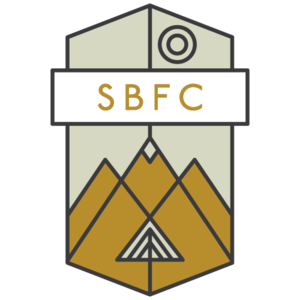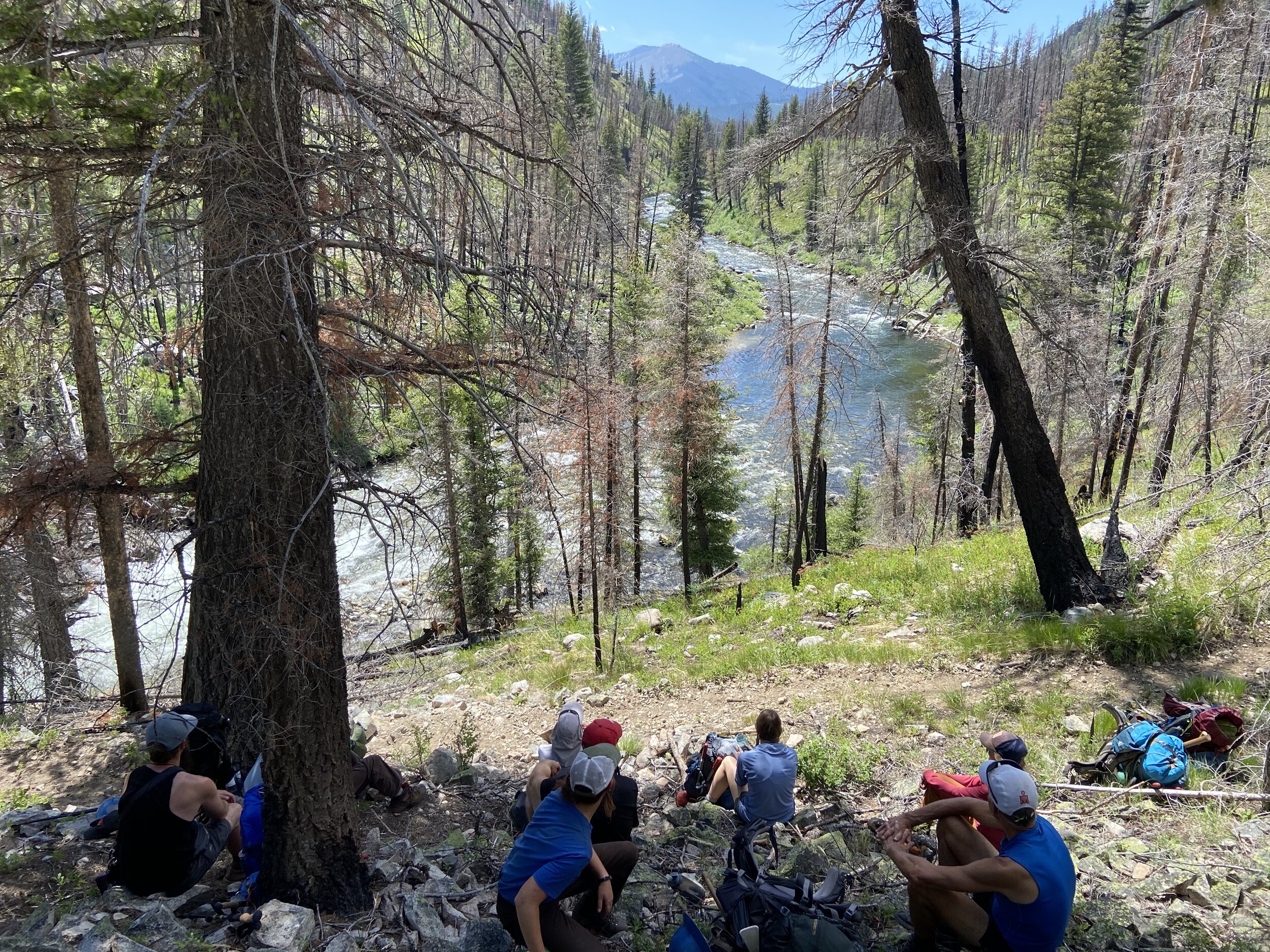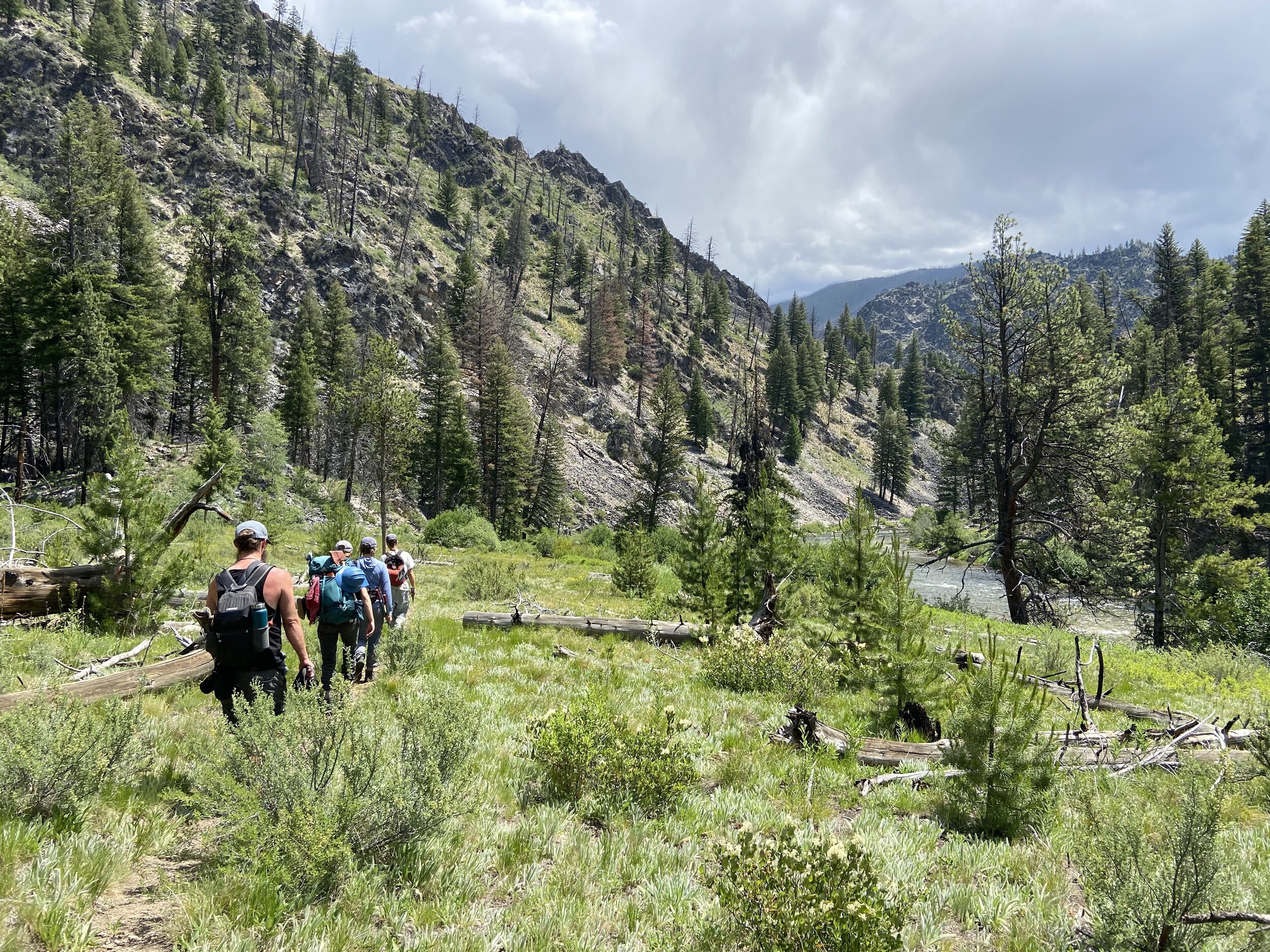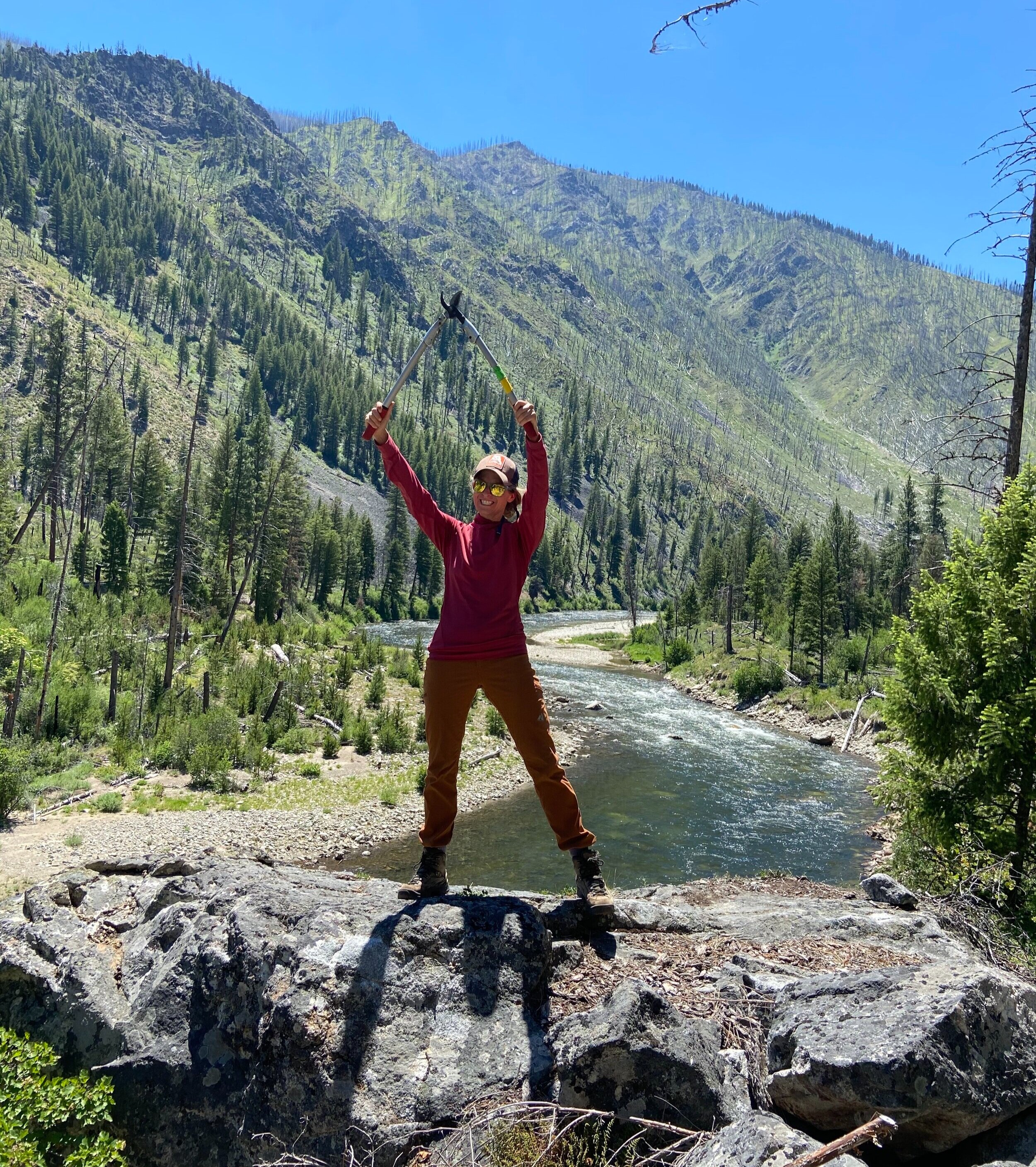Forrest Lampert
Wilderness Ranger Fellow
Elk Summit Trailhead
July 6-14, 2021
Nez Perce Clearwater National Forest | Selway-Bitterroot Wilderness
The main reason I was interested in this job when I saw it posted online was because I wanted to gain experience living in the Backcountry and in Wilderness. I am from Wisconsin where there is a ton of woods and wild places, but due to people’s love of cottages and ATV trails, there is very little designated wilderness (only around 35,000 acres in the whole state). It is so cool to find that a lot of wilderness still exists in the western United States. Working out here is a drastic change from the environment back home. Wisconsin is pretty flat; highest point is 1,951 feet above sea level. Idaho is uh...not flat. There are mountains everywhere….and big ones too. This past hitch was, by far, the most challenging and exhausting for me.
We started out at the Elk Summit Trailhead by Hoodoo Lake (which, by the way, has awesome fishing if people are looking for a spot) and started working up Trail Number 4 to Big Sand Lake. We slowly worked our way up…..bumping camp every couple of days. We first camped by the trailhead for two nights and then camped near the junctions of Trail 1 and Trail 4, which was a really cool spot. I set my tent up on a rocky outcropping.
(Quick note: fishing is really good by that junction, and I still find it crazy that deer are not scared of humans in the Selway. I had this nice buck 5 yards away from me; he did not care at all.)
View from my tent.
Buck near my tent.
By Day 5, we finally reached Big Sand Lake (awesome lake, but bad fishing). Day 6 is where the real "fun" started. We had a 4-4.5ish mile hike uphill from Big Sand Lake to Frog Lake. There was a rise of 2,000 foot of elevation in our hike. I played sports my entire childhood, but let me tell you, that hike was one of my tougher workouts since high school sports. I was completely gassed after the first two miles. We had a 1,500 foot elevation change in the first 1.5-2 miles, and we still had a few more miles to go. Not gonna lie, a few thoughts were going through my head hiking up that mountain:
1. It made me briefly hate all mountains.
2. It left me with the question, “Why would anybody do this for fun?”
3. It made me miss the Midwest because I never had to hike up anything that steep back home.
But once we got to the top, all those thoughts were gone. It was totally worth it. The views from the top of the mountain, and the alpine ecosystems, were awesome— 10/10 views.
View overlooking Frog Lake.
Our goal was to make it to Frog Lake to camp. Seeing Frog Lake in the distance just made me think “hallelujah”; we are going to make it. (Another quick note: very beautiful lake! Great for swimming, but not for fishing. No fish live in it.)
Frog Lake.
We set up camp at Frog Lake for two nights and worked up to the Diablo Lookout Tower. We almost made it, but came up just short of it. We also stopped at Frog Peak after work. The views were awesome.
Me sitting on Frog Peak.
Me laying shirtless in the snow by Frog Peak.
After those two nights, we slowly made our way back. Luckily, it was mostly all downhill, but walking downhill for that long really hurts the knees. We then returned to camp at Big Sand Lake for one night while also doing campsite inventories in the nearby area. On our last day, we hiked out about eight miles.
Even though this hitch was, by far, the most challenging for me, it was also the most satisfying and rewarding. This hitch was exactly what I was expecting this job would be, and I am happy I got to experience it. Even though it is very tiring work, and I am sure there will be many more hard days coming, I am looking forward to them. I love a good challenge! As long as these good old Wisconsin legs keep chugging, I can get up any mountain…..or at least for as long as my boots hold up because they are taking a beating this summer (the tread is pretty much non-existent at this point.)
My boots…or what’s left of them.
Nez Perce-Clearwater National Forest | Selway-Bitterroot Wilderness
University of Wisconsin-Stevens Point
Major: Ecosystem Restoration & Management
Forrest is from Appleton, WI, and is an avid hunter and fisherman, which is where his love for the outdoors began. He helped build trails when he worked on a conservation crew in his home state of Wisconsin. For Forrest, Wilderness is best kept wild, and he wants to work to preserve it for as long as possible.






































![GetAttachment[2].jpg](https://images.squarespace-cdn.com/content/v1/559d365ae4b0233f52969762/1603731785219-GHME1IYIF9U1I316IA7G/GetAttachment%5B2%5D.jpg)




